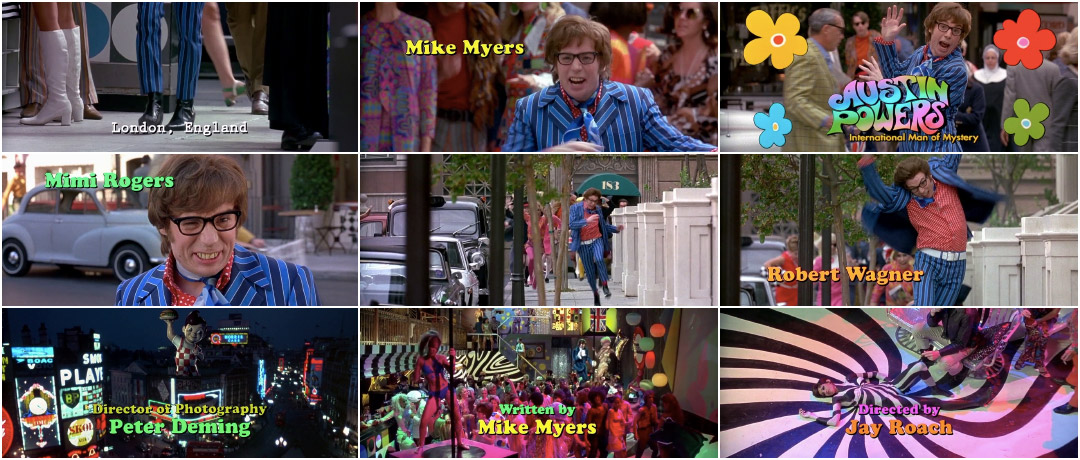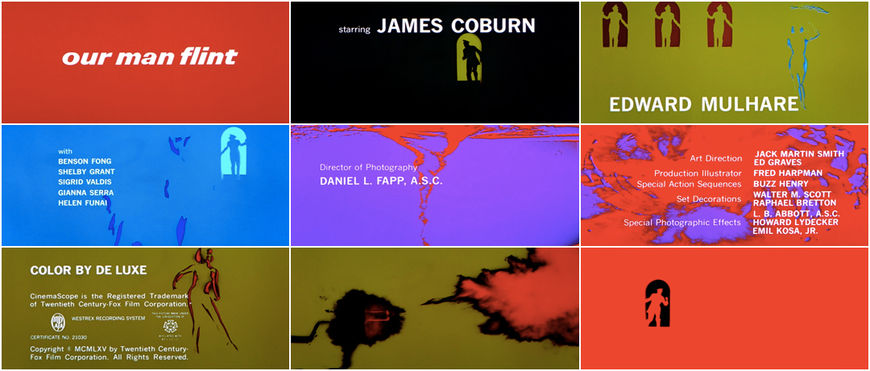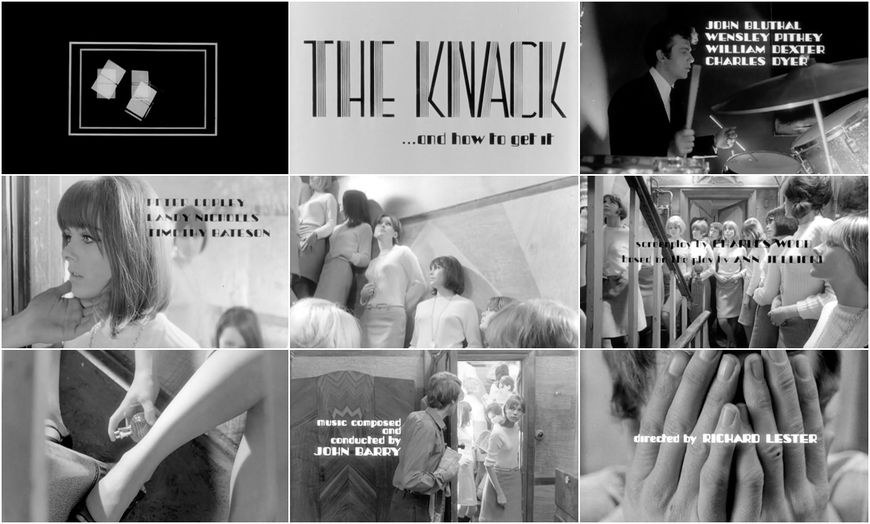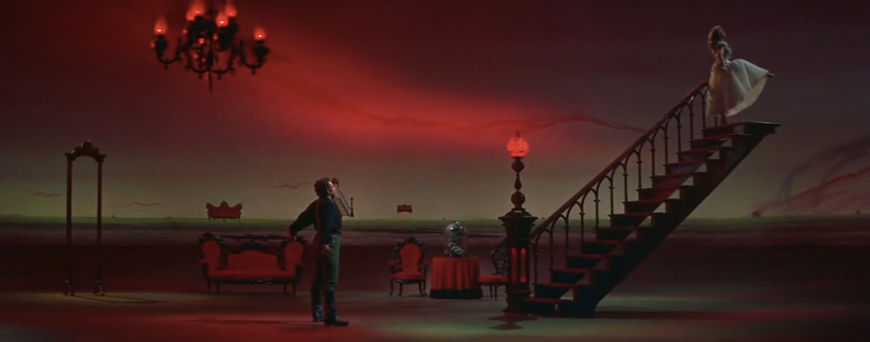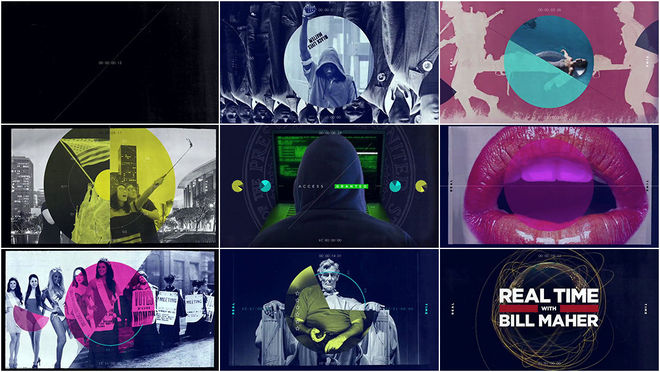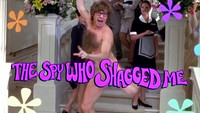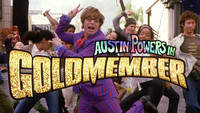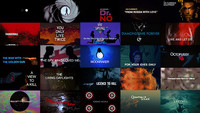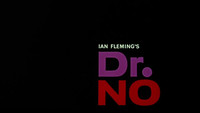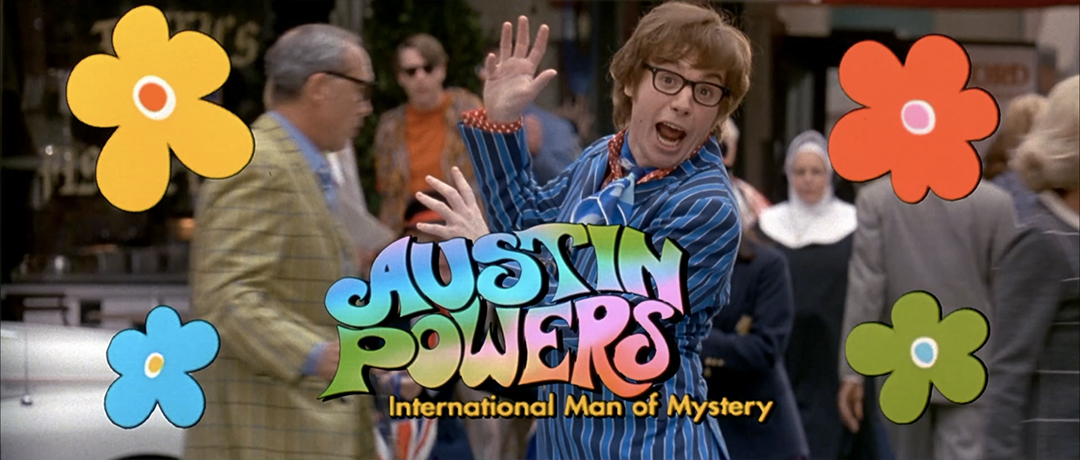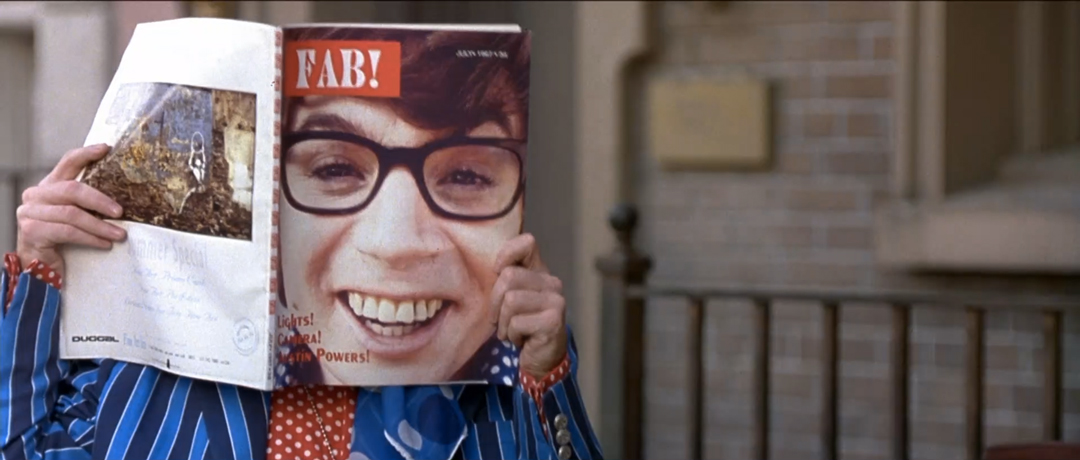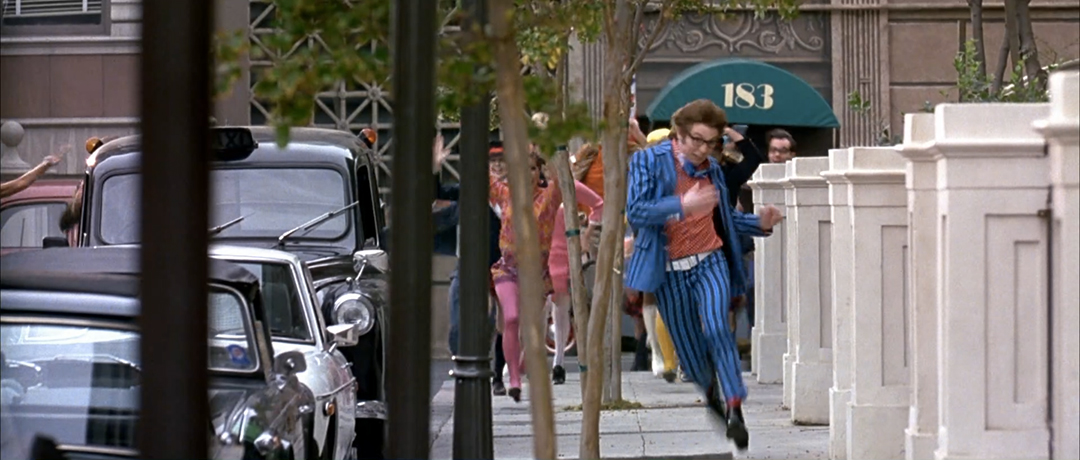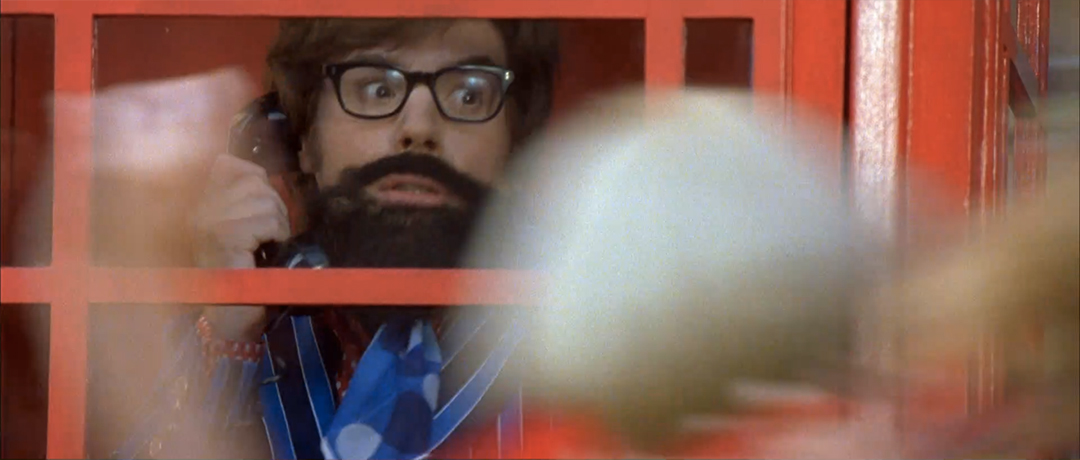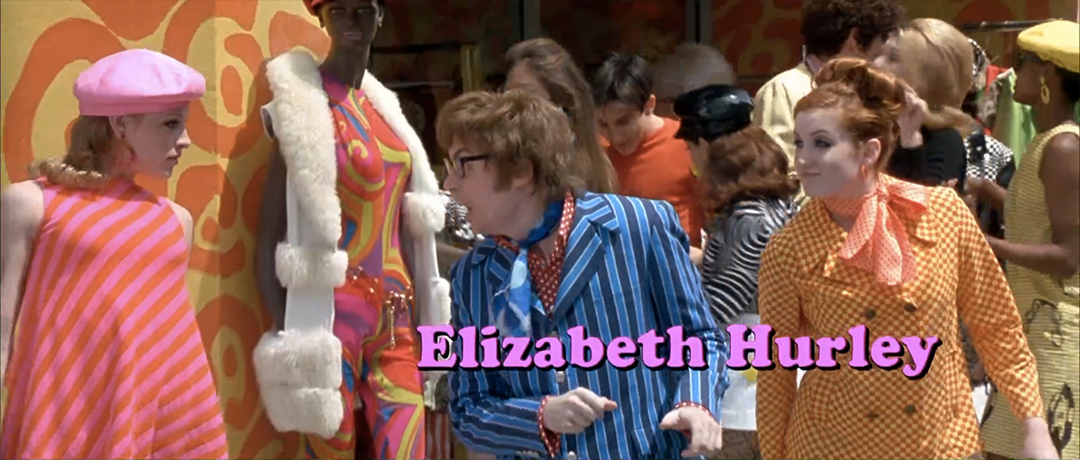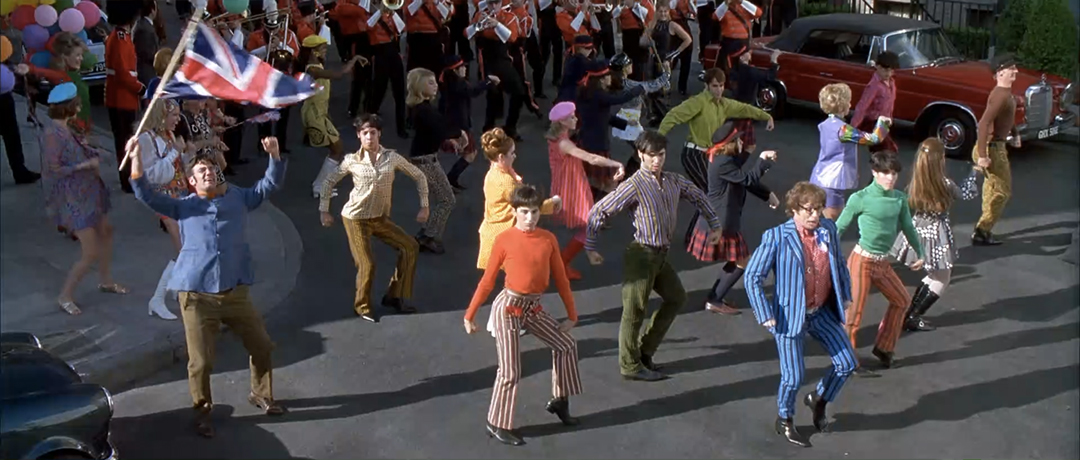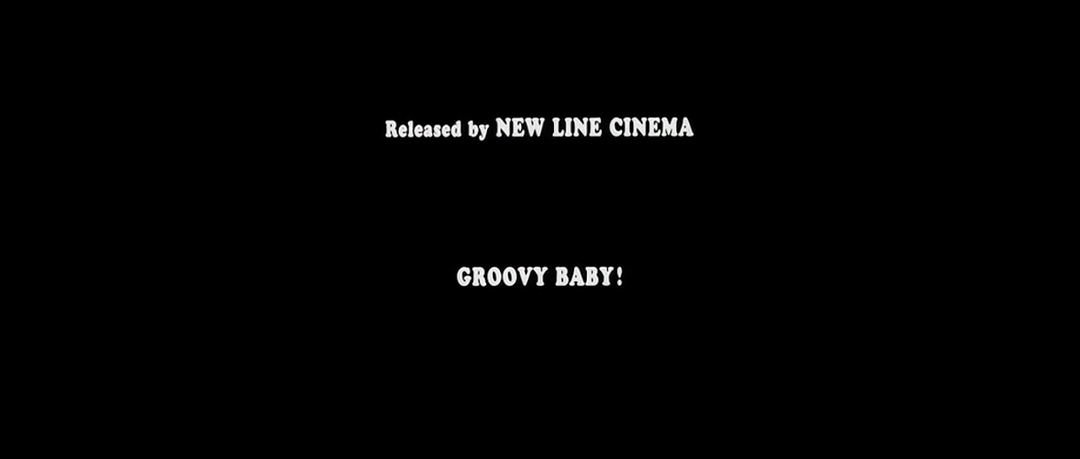The title sequence of Jay Roach's swingin’ spy spoof Austin Powers: International Man of Mystery begins with the distinctive opening bars of Quincy Jones’ “Soul Bossa Nova” and a strut like no other. It’s Powers – Austin Danger Powers – with a spring in his step and a mission to resurrect the ’60s.
The creation of comedian Mike Myers, Austin Powers is a character born out of pure love for James Bond, a tongue-in-cheek send-up of secret agents and Swinging London. In time with Jones’ cheerful cuíca drum, Powers shimmies and shakes down the street, mobbed by vibrant and eager fans, his energy infectious and charming. Thanks to costume designer Deena Appel, the actors and dancers are a kaleidoscope of glorious hyper-chromatic colour, decked out in white go-go boots, velvet bell bottoms, and hot pink tights. The credits appear in bright drops of Cooper Black, a heavy serif that plays off of the psychedelic curves of the title card and its twirling flowers.
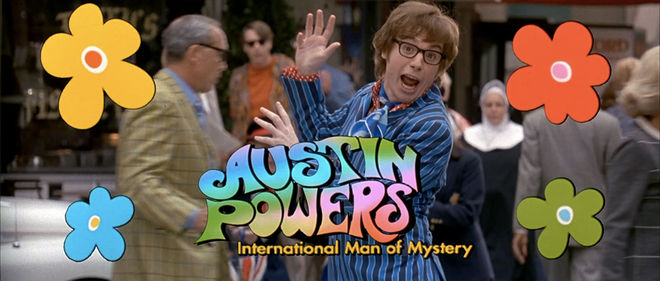
Austin Powers: International Man of Mystery (1997) title card
Like the film proper, this opening sequence borrows heavily from its inspirations, nodding toward figures like Bond, Derek Flint, and TV’s Jason King, as well as films like Richard Lester’s A Hard Day’s Night (1964) and Michelangelo Antonioni’s Blow-Up (1966).
The sequence shoot was a relatively low-fi and low-budget affair, involving a backlot designed to look like London, England, a marching band, a cast of shrieking extras, rear projection, and a team of dancers. The choreography was created by Marguerite Pomerhn Derricks, who worked with Myers to create the dance sequences in the film. “She is at once a great artist and a great pragmatist,” said Mike Myers of Derricks. “She can dream about the possibility and yet live within the reality.” When the reality of Austin Powers expanded to include not one but two sequels, Derricks was along for the ride, the ambitions and choreography of the opening titles growing with each film.
The character that began as merely a member of Ming Tea, a faux retro-mod musical group formed after Myers left Saturday Night Live, has now spawned a trilogy of films so popular that they have raked in more than $650 million worldwide. The character has also appeared in soda commercials and music videos, segments on TV shows, mountains of merchandise, several video games, a collectible card game, and even a pinball machine. In 2010, Austin Powers was ranked #23 in a list of the 100 greatest characters of the last 20 years. But our first proper taste of the randy, snaggletoothed superspy began here, in one of the most boisterous opening sequences of the 20th century.
A discussion with Austin Powers Director JAY ROACH and Choreographer MARGUERITE POMERHN DERRICKS.
First, thanks for being available for this interview! It's such a pleasure to highlight the Austin Powers titles because what you made with those movies is so exceptional and interesting.
Jay: Oh, thank you. I love title sequences, so it’s fun to talk about. I was just looking at the first one and I was inspired to remind myself what the other two were like and it’s pretty funny how we went from a deliberately low-tech thing that was inspired by a few low-tech films into increasingly complex title sequences to the point where the last one is actually a spoof of excessively expensive title sequences! [laughs] It was funny how much the title sequence became part of our whole process and part of the whole culture of Austin Powers. Not too surprising, given that we were related to the Bond films which had some of the best title sequences ever made.
—Jay RoachI guess I love title sequences because they’re such an opportunity to be purely expressive and experimental

Exactly, and that’s such a huge reference to have. How do you come close to that?
Jay: [laughs] Well one of the ways was to go away from it, in a way! We didn’t want to be seen as just a Bond spoof. There’s obviously a lot of elements derived from James Bond, especially Dr. No, with Dr. Evil and some of his world, but the Austin world was meant to be a kind of Pop Art world. He wasn’t so much a Sean Connery-type Bond character as he was like David Hemmings in Blow-Up, or a little bit of Our Man Flint.
Our Man Flint (1966) main title sequence
Jay: He was also meant to be inspired by Beatles culture and Carnaby Street. So the title sequence for the first film borrowed from A Hard Day’s Night, the Richard Lester film, from the jet-set photographer in Blow-Up, and we were trying for a sort of – not quite Bob Fosse – but a dance feel that was pure fun. We talked a lot about the style of dancing we wanted.
Marguerite, how did you join the production? How did that come about?
Marguerite: I used to work out with Demi Moore when we did Striptease. I got to know the Todd sisters really well, and Demi really well. Demi Moore’s company Moving Pictures were the producers on Austin Powers. So the Todd sisters called and said, “We want you to be in the movie. We want you to be a go-go girl.”
Suzanne and Jennifer Todd are film producers and the founders of production company Team Todd.
—Marguerite Pomerhn DerricksI’m like, 'I don’t want to be in the movie. I want a meeting with Mike Myers. I want to choreograph this movie.'
They sent me the script and I got back to them and I’m like, “I don’t want to be in the movie. I want a meeting with Mike Myers. I want to choreograph this movie.” It was Jay's first film, and so I met with Mike and Jay. I went to his trailer. Mike and I started talking and there was no dance written in that opening sequence but it screamed dance. So we started talking about different movies we liked. We were so in sync. It was an indie movie and they didn’t have a lot of money and I was like, “I don’t care.”
Jay: We wanted to try to reach for a Fosse or Jerome Robbins style – there’s even more West Side Story in the second film – but then also be ready to pull back into a comedic zone. Mike used to call it “eccentric dancing.” I think he also studied tap-dancing and had a love of the kind of dancing that Dick Van Dyke did in Mary Poppins, which is Broadway-style musical meets something more comedic – almost a bit of clown. Mike could probably dance as precisely and formally as he wanted to, but it wasn’t funny when he did that! The earnestness and commitment is at least as important as the precision, and sometimes if it’s a little off or a little eccentric, it would be better. That gave us both permission to play around. It didn’t have to be perfect, we could just concentrate on it being enjoyable and just unbelievably fun.
The song “Soul Bossa Nova” is so closely associated with Austin Powers now, but how did that come to be in the film? How did you find the music?
Jay: Our music guy, Chris Douridas from KCRW, sent us that song, “Soul Bossa Nova” by Quincy Jones. I think it was a hit back in ‘62. It was in a really obscure film. What we noticed from watching the obscure films that we were being inspired by was that all of the best title sequences had very unusual kind of trippy flutes and all kinds of exotic, almost hallucinogenic scores over the title sequences. So when we found that song – and it also had a rhythm you could dance to – it helped us figure out what the whole feel of the title sequence would be, and it therefore affected the whole feel of the film.
—Jay RoachWe thought it would be funny to take a guy with bad teeth and funky hair and slightly awkward body language and deify him.
DVD COMMENTARY: Austin Powers: International Man of Mystery (1997) main title sequence and opening scene commentary with Jay Roach and Mike Myers
What was Mike Myers like to work with on this? You guys had an existing relationship but what was working on this like for you?
Jay: You know, I wasn’t sure what to expect. It was fantastic. I knew Mike but had not known him all that long. Our wives knew each other. He had talked about this character and he had done a little of it for me. We would just start riffing on English humour and English comedians we loved. He said, “Would you take a look at this script?” I’d give him some notes and then he’d ask me to look at reels of directors that he was considering. He wanted someone he could collaborate with, possibly a first time director with whom he could sort of be influential. I found someone and I said, “Here’s a guy,” and he actually said, “Oh, I put you up for the job.” [laughs] So he put me up for it. I did kind of have to audition for the part. I remember Bob Shaye said, “Who are you? There’s no real evidence of your comedic background.”
Robert Shaye, often referred to as Bob Shaye, is an American businessman, film producer, director, and actor. He is the founder of New Line Cinema.
I didn’t have any kind of directing reel! I said, “I don’t have a reel but here’s a reel of films I like! And if I was going to direct this, this is what it might feel like.” [laughs] I had clips from obscure films from that era. I showed obvious things like A Hard Day’s Night and Our Man Flint but also obscure Pop Art crime films and heist films like Danger: Diabolik, The 10th Victim, The Knack... I was just rewatching that title sequence and part of the fembot idea came out of the title sequence of The Knack – another great Richard Lester movie.
—Jay RoachI would urge anyone who has a moment to look at the title sequence of The Knack. It’s so trippy and weird.
The Knack... and How to Get It (1965) main title sequence, with title design by Richard Freeman
Jay: One of the ways I got the job was I helped come up with the idea of the fembots and then I pitched this thing that we took straight from The 10th Victim, which is a Marcello Mastroianni–Ursula Andress movie where the guns pop out of the bra in the middle of this dance. So I showed all these clips. They were an editorial style reference. As I look back at the title sequences of the Austin films but especially the first one, it was a pure distillation of all those influences.
Marguerite, can you talk about your work on that fembot dance scene?
Marguerite: The coolest part for me besides the opening sequence was that scene where Mike does that striptease to make the fembot’s heads blow up. What I did is I used the same exact movements that I’d used for Demi Moore and Elizabeth Berkeley in Striptease for Mike. [laughs] It gave me such a unique opportunity to kind of make fun of myself – not take myself so seriously.
Scene from Austin Powers: International Man of Mystery (1997) in which Austin does a striptease for the fembots
How did you plan everything out? Were there jokes or gags that you included on the fly?
Jay: It was my first feature film so I was so overly prepared in case something went wrong. I had it pretty carefully storyboarded. We were shooting on Paramount’s backlot so we didn’t have much time. There were stunts, there’s a guy front-flipping into the Jaguar, so there weren’t a huge number of improvisations. There are so many props. Everything had to work like clockwork. We had already imagined how the graphics would go. They look easy and fun but the anxiety that went into over-preparing, I still carry the memory of that quite vividly.

Still from the main title sequence in which Austin Powers poses with a magazine prop
And that opening dance number? How did that come together?
Jay: It evolved once we got the music. We’d always talked about doing some kind of homage. If we are to follow this character and actually care about him, connect to him as opposed to just laughing at him – and if we want to distinguish him from Sean Connery’s James Bond and from like a Peter Sellers character – the way to do that was to see him through other people’s eyes. We’re – the filmmakers – embracing him. We‘re mocking him but we’re embracing him by showing people adoring him. That’s where the Beatles thing came in.
—Jay RoachIt was about making it contagious. That was the whole goal of the title sequence
A Hard Day's Night (1964) main titles, with title design and photography by Robert Freeman
Jay: In A Hard Day’s Night, the boys and the girls that are chasing them are so completely under The Beatles’ spell. They’re not just men. They’re some kind of elevated species, you know? We thought it would be funny to take a guy with bad teeth and funky hair and slightly awkward body language and deify him. [laughs] So that was the vibe we were trying to get, just that, “We love this guy so much, you’ll love him too if you just stick with it. He may not look it, but you may fall for him, too!” That was my pitch for how to make Austin so beloved. It was about making it contagious. That was the whole goal of the title sequence: to make it so contagious from three minutes in that you would be excited about the rest of it. You’d have an affection for the film.
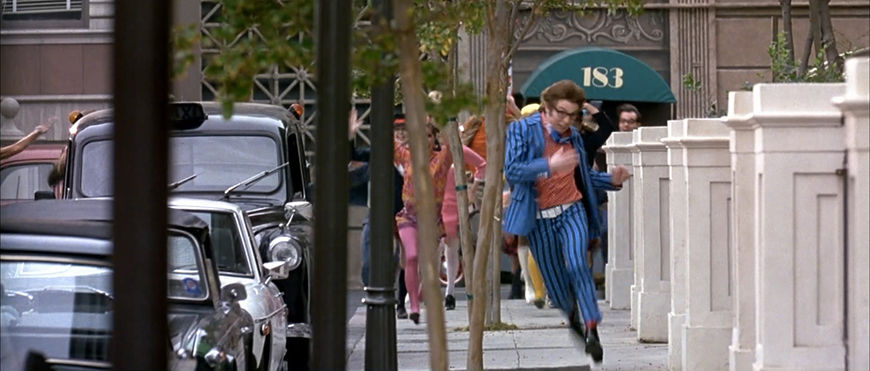
Still from the main title sequence in which Austin Powers is chased by adoring fans
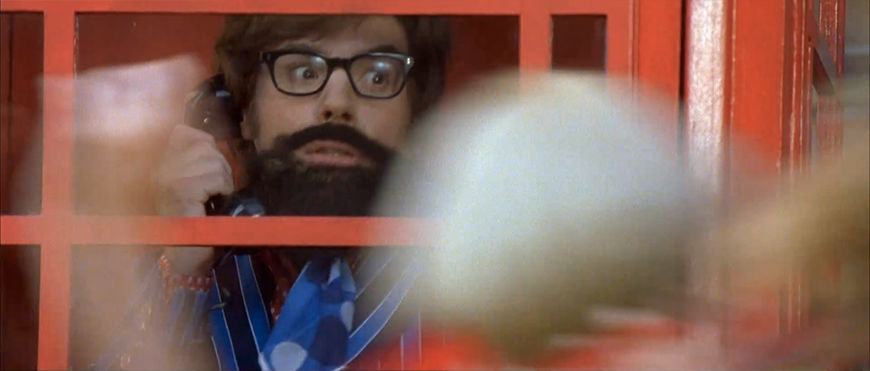
Austin Powers wears a disguise and hides from adoring fans in a phonebooth
How did you work out the choreography and the dance number?
Jay: Marguerite was amazing and she contributed so much of the vibe of the sequence. She studied all the ’60s influences, especially from Fosse. There is a certain whimsy and a joy of invention in it and I think she’s very tapped in to that.
Marguerite: It was really a marriage between the three of us when it came to these musical sequences in the film. Mike always puts things on index cards. He breaks everything down so when you do a scene, you go in, and there’s index cards all over the floor. Mike talked my language as a dancer. He spoke in eights, and that’s how dance is spoken – we talk in eights. Like, “Oh yeah, it’s 30 seconds long, that’s eight counts of eight, on the third count, Mike’s gonna come around the corner…” so Mike got that. By the third film, Jay was talking in eights, too! I just found it so fantastic. Everybody started talking in dance eights. I guess it was sort of storyboarded on those index cards. I had my roadmap, and then I creatively filled in the movement for that roadmap. That’s how we always started the opening title sequences in Austin Powers. It started with Mike’s vision, the index cards, breaking it down in dancer eights. From there I go into the studio and I start doing a skeleton crew, working it out. Then we hire everybody and make it come to life. On the first Austin Powers, I used a teen dance company as my skeleton crew. On a Sunday afternoon, I had the kids, all between 12 and 17 years old, doing this opening sequence and Mike showed up in his slippers with a cup of coffee. He watched the kids, loved it, and just jumped in and started dancing with the kids. Mike said, “Well, let’s just hire them.” So if you look at that opening sequence of the first film, that’s my teen dance company.
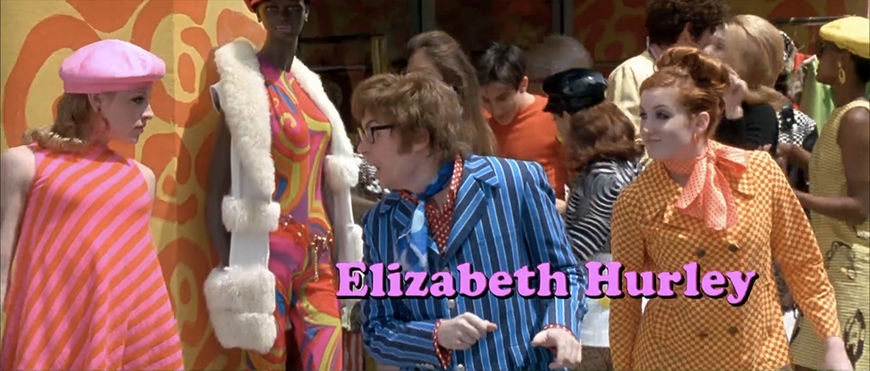
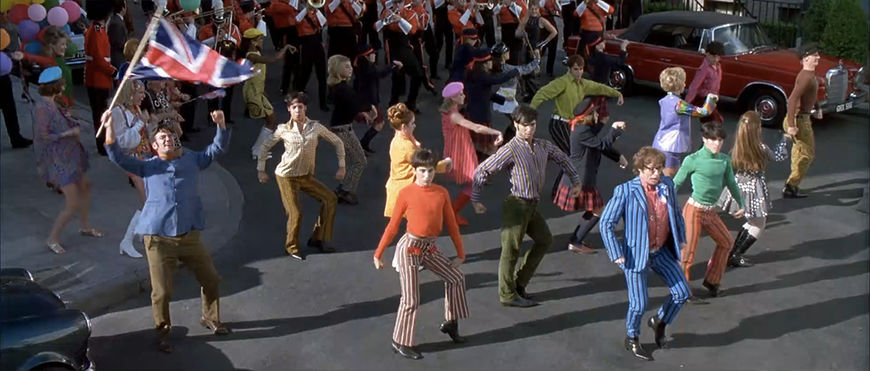
And that was their first film credit?
Marguerite: Yeah, they were kids! And they were so hungry and so talented that they could do just about anything. They became my muses. Still, to this day, my vocabulary all stems back to those days with those kids. We were all creating magic.
With TV and film, as a choreographer, it’s different than stage. You’re creating for the camera. We don’t have the same kind of time that they had back in the day with Gene Kelly and Fred Astaire. They had months to work on sequences and how it was gonna be shot. You don’t get that anymore.
How long did the shoot take, and what kind of rehearsal time did you have?
Marguerite: For the first movie, the opening title sequence shoot was one day. Not even a full day because there’s so many other shots that you have to get in the day. That Sunday in the studio was our big rehearsal day. We might’ve had one more on top of that.
So it was really tight!
Marguerite: Oh yeah, it was really tight. Two days max. There was no budget. The first Austin Powers, there was just no money. We just made this happen, we just did it so quickly, and thank God, because it was such a big part of the film.
I remember Mike calling me from the premiere, he called me from the lobby, saying, “Marguerite, everybody’s doing the steps, they’re coming out, they’re dancing and doing the choreography!” That was exciting to both of us.
Jay, as far as the logotype and the graphic elements go, where did that come from?
Jay: Casino Royale I would say is probably a big influence, the original Casino Royale… all the kind of hippie-dippy psychedelic swirls in the typeface, and the spinning flowers. We had mocked up that stuff in the storyboards. We had really thought that stuff through in advance using Casino Royale as a vibe for it.
Casino Royale (1967) main titles, designed by Richard Williams
The end sequence has that photo shoot and that music video with Ming Tea. Can you tell me a little about that and those sequences?
Jay: Well, the Ming Tea… Okay, so, we had this notion that although we had a lot of plot in the movie and we make fun of plot by having Basil Exposition give the exposition to bridge plot gaps, we had always loved how in the TV show Laugh-In from the early ’70s, that they would do jokes but then just have Goldie Hawn in a bikini dancing in between the sequences to kind of button them. We used to call them "sequence breaks." I had seen Mike actually perform in a little mini-band which involved my wife Susanna Hoffs – who plays one of the characters, Jillian Shagwell – and Matthew Sweet. They all had terrible wigs and Susanna had a crazy mini-skirt. So we borrowed from Laugh-In and variety shows from those days: The Dean Martin Show, The Golddiggers, The Carol Burnett Show.
Psychedelic sequence break 1
Psychedelic sequence break 2
Psychedelic sequence break 3
Jay: Mike wrote some really excellent songs and we put ‘em on the soundtrack. I tried to borrow the vibe – the fast cutting and the use of zooms is such a goofy thing from that age. We hardly use zooms that way anymore. It’s so weird to be going crazy with the zooms! And pure colour, you know? As much as we could – just fill the frame with colour at every second. So that was inspired by Laugh-In, that whole Ming Tea idea.
SUPPLEMENTARY: Austin Powers: International Man of Mystery (1997) end title sequence
Marguerite, when you think about your personal influences, do you have favourite dance numbers in film that have influenced you or inspired you as a creator?
Marguerite: Everything by Michael Kidd. Oklahoma! by Agnes de Mille. Oklahoma! was just spectacular. I’d probably say that the dream sequence of Oklahoma! was one of my favourites of all time. It’s so creative and innovative. I loved Agnes de Mille. When I was a struggling artist in New York I remember seeing one night on TV a documentary on Agnes de Mille and I just felt this overwhelming excitement inside myself – I was so inspired by her.
Oklahoma! (1955) dream dance sequence choreographed by Agnes de Mille
Jay, what are some of your personal favourite title sequences?
Jay: The Bond sequences just blew us away. I mean, Dr. No and Goldfinger are probably two of the best title sequences from any movie. But all of them were pretty extraordinary.
I would urge anyone who has a moment to look at the title sequence of The Knack. It’s so trippy and weird. It’s all these women dressed and acting like mannequins. I never forgot it. It was just such a bizarre and compelling thing, these sexy but disturbing sort of robotic women. [laughs] It was just a weird interesting influence!
So much of the great title design is happening now in television. I know these great title guys now, Stun Creative, who just did the new Bill Maher. For some reason, that one I really like!
Real Time with Bill Maher (2003 - ) TV series season 15 main title sequence, created by Buster (Stun Creative)
Jay: I guess I love title sequences because they’re such an opportunity to be purely expressive and experimental and graphic and composition-oriented. You’re trying to set the tone for the whole movie, and so I think it’s just an opportunity for pure expression that sometimes can be extremely artsy but still very effective as part of the storytelling.
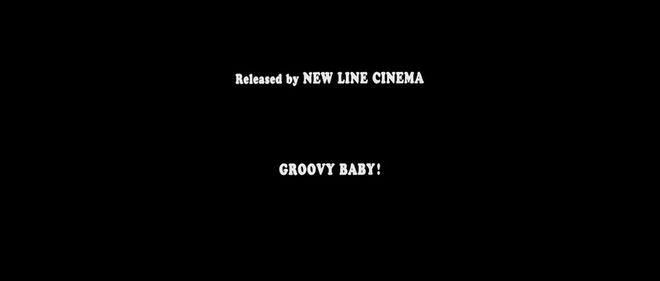
Final frame of the Austin Powers: International Man of Mystery end credits crawl




